Common Burdock
Kingdom: Plantae
Clade: Tracheophytes
Clade: Angiosperms
Clade: Eudicots
Clade: Asterids
Order: Asterales
Family: Asteraceae
Genus: Arctium
Name:
Burdock (Arctium lappa or Arctium minus - both referred to as Burdock, and often considered interchangeably).
Also known as : Lappa minor, clotbur, cuckoo-button, Velcro plant, Sticktight, Love leaves, Bardane (French), Petite Bardane, Chou Bourache, Cibourroche Bourrier, Gobo, Niu Bang Zi (Pinyin), Fox’s clote, Cockle buttons, and many more.
Taxonomy :
Gallery of identifying features including branching pattern, flowers, mature fruit and seeds and leaf detail: (photos as seasonality allows)
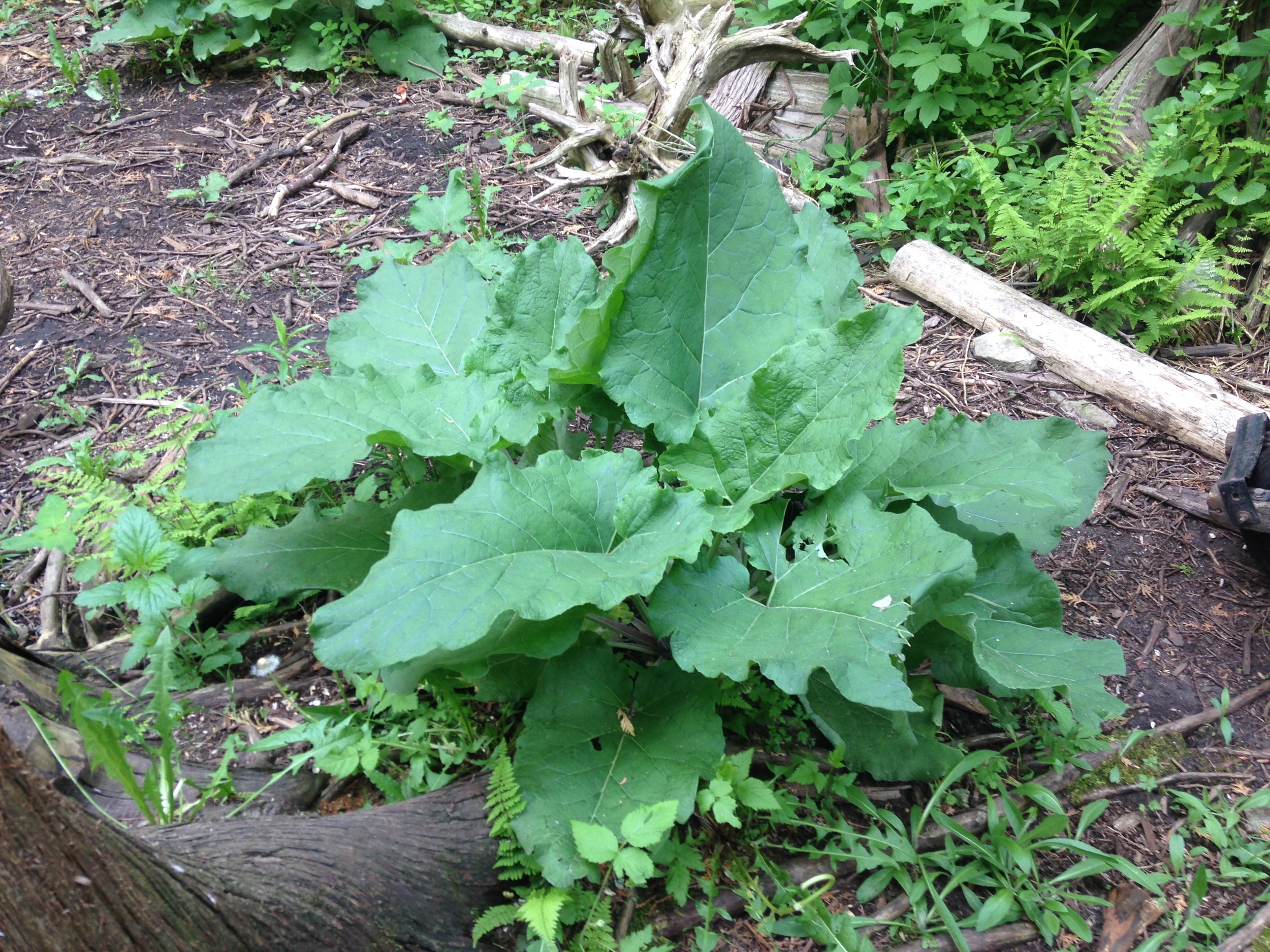
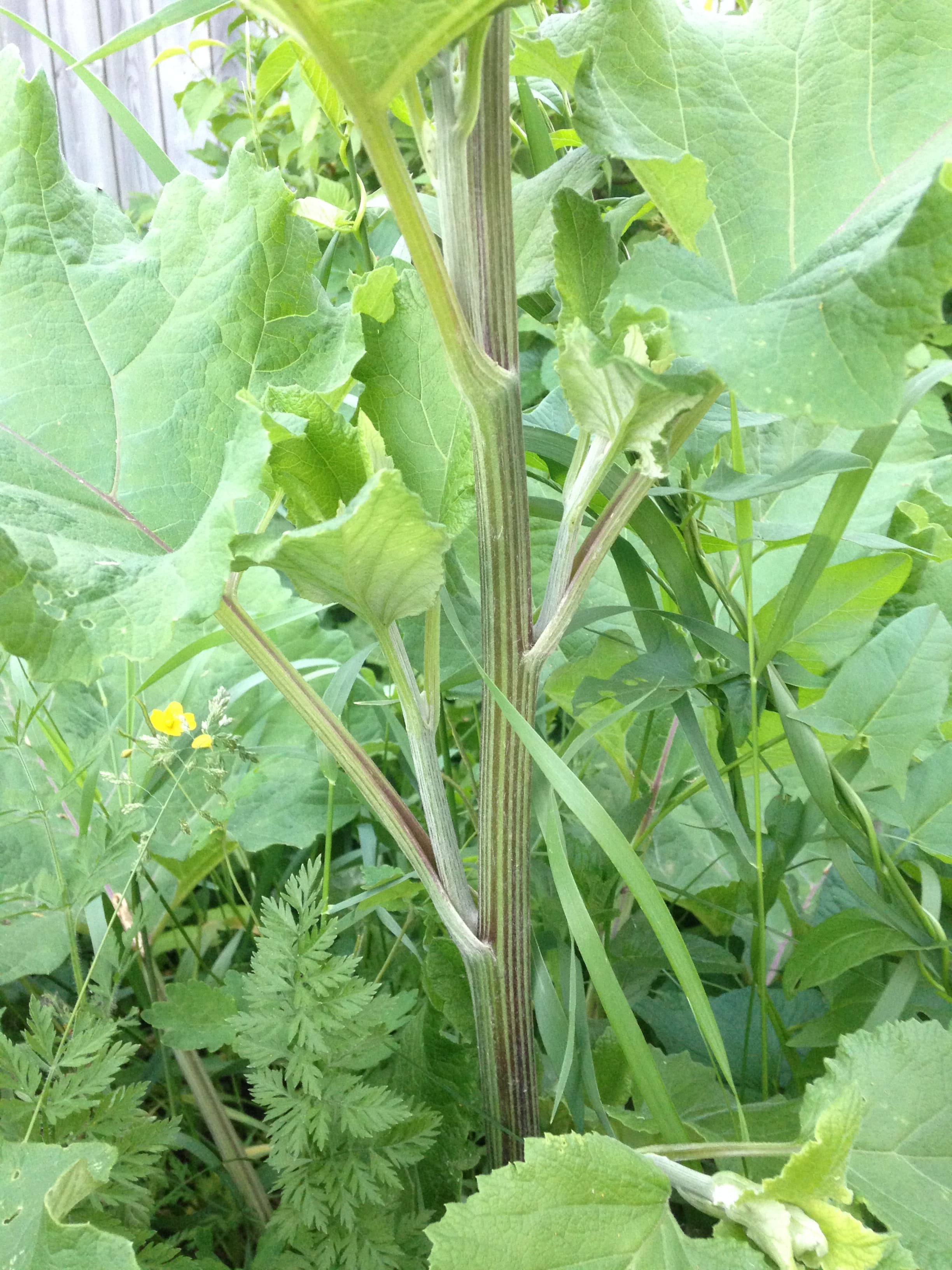
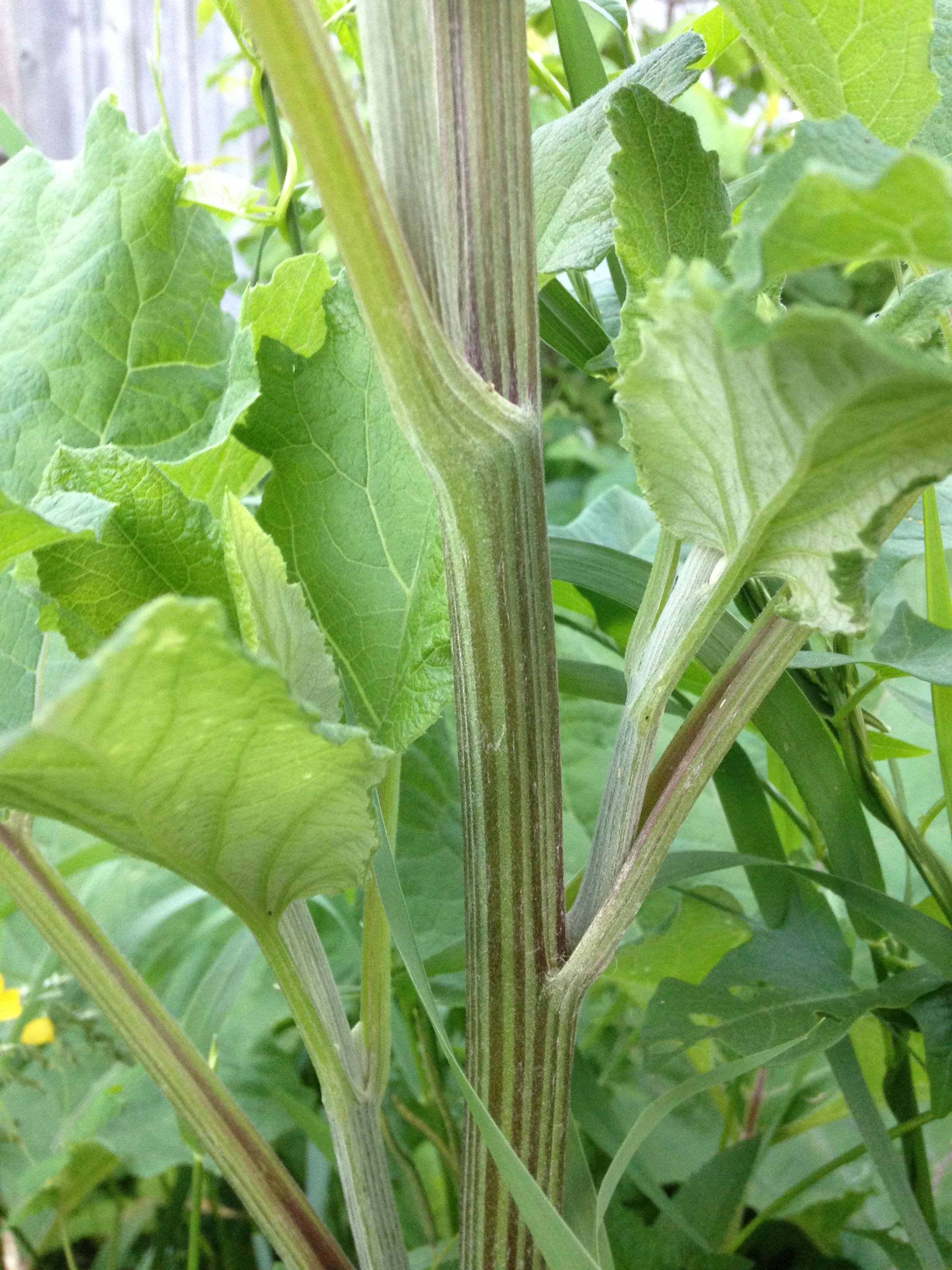

Geographic range :
Burdocks originate in temperate Eurasia but are now wide spread across Canada and the continental U.S. (minus Florida).
Description :
For both Burdocks, Lawrence Newcomb describes Burdocks as “[l]eaves egg-shaped, the lower ones usually heart-shaped, entire or somewhat toothed. Flowers in bristly heads, in fruit producing prickly, clinging burs. Coarse weeds of waste places. Summer and fall. Composite family.”
Peter Del Tredici describes Burdock in his book Wild Urban Plants of the NorthEast
Vegetative Characteristics : Burdock produces a rosette of large evergreen leaves in its first year and a tall, erect, multibranched flower stalk in the second year. Alternate, heart-shaped leaves can be up to 20 inches (50 cm) long by 16 inches (40 cm) wide; their upper surface is dark green and smooth, the undersurface is light green and woolly. The stout fleshy taproot makes the plant difficult to remove.

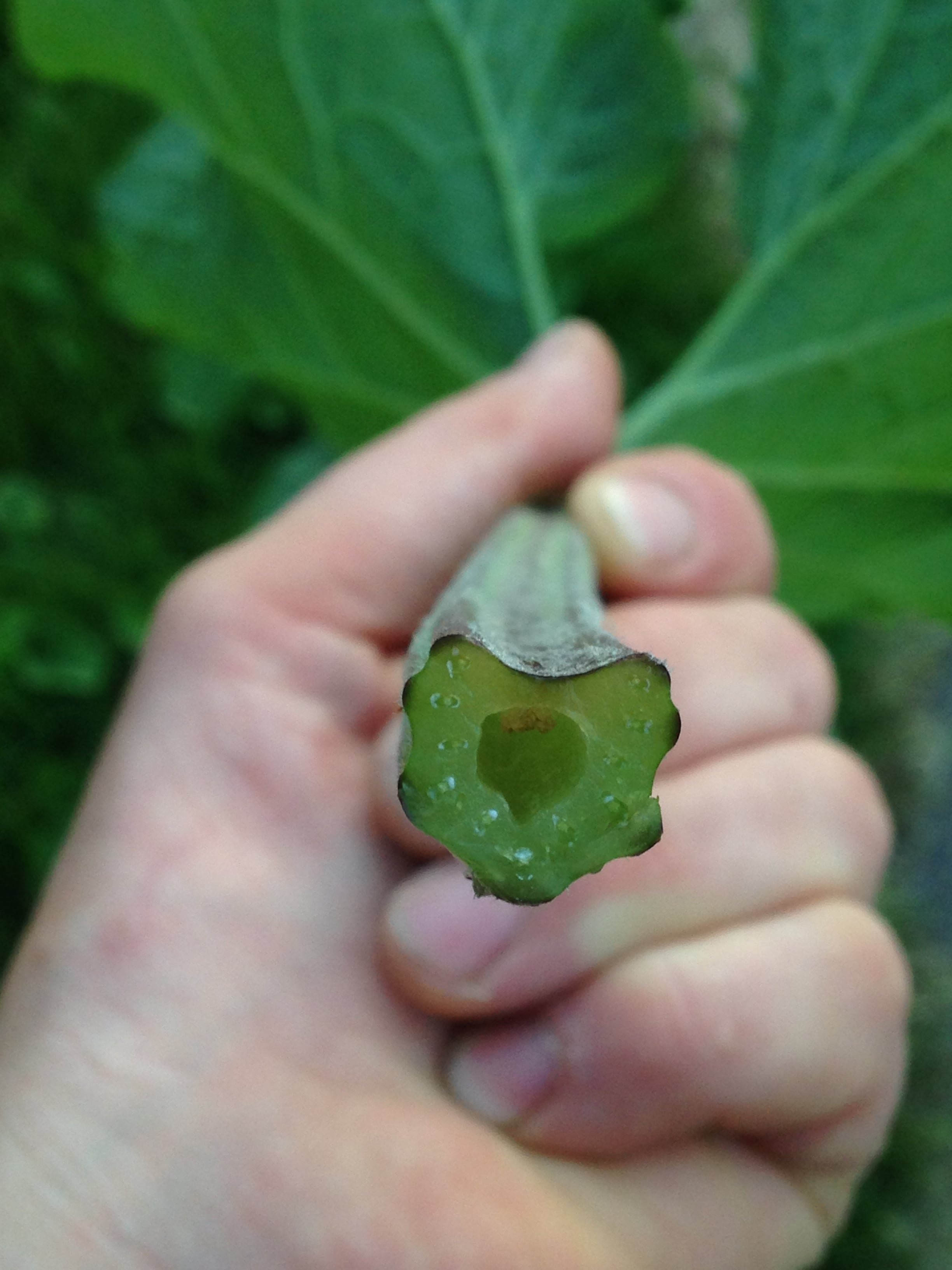
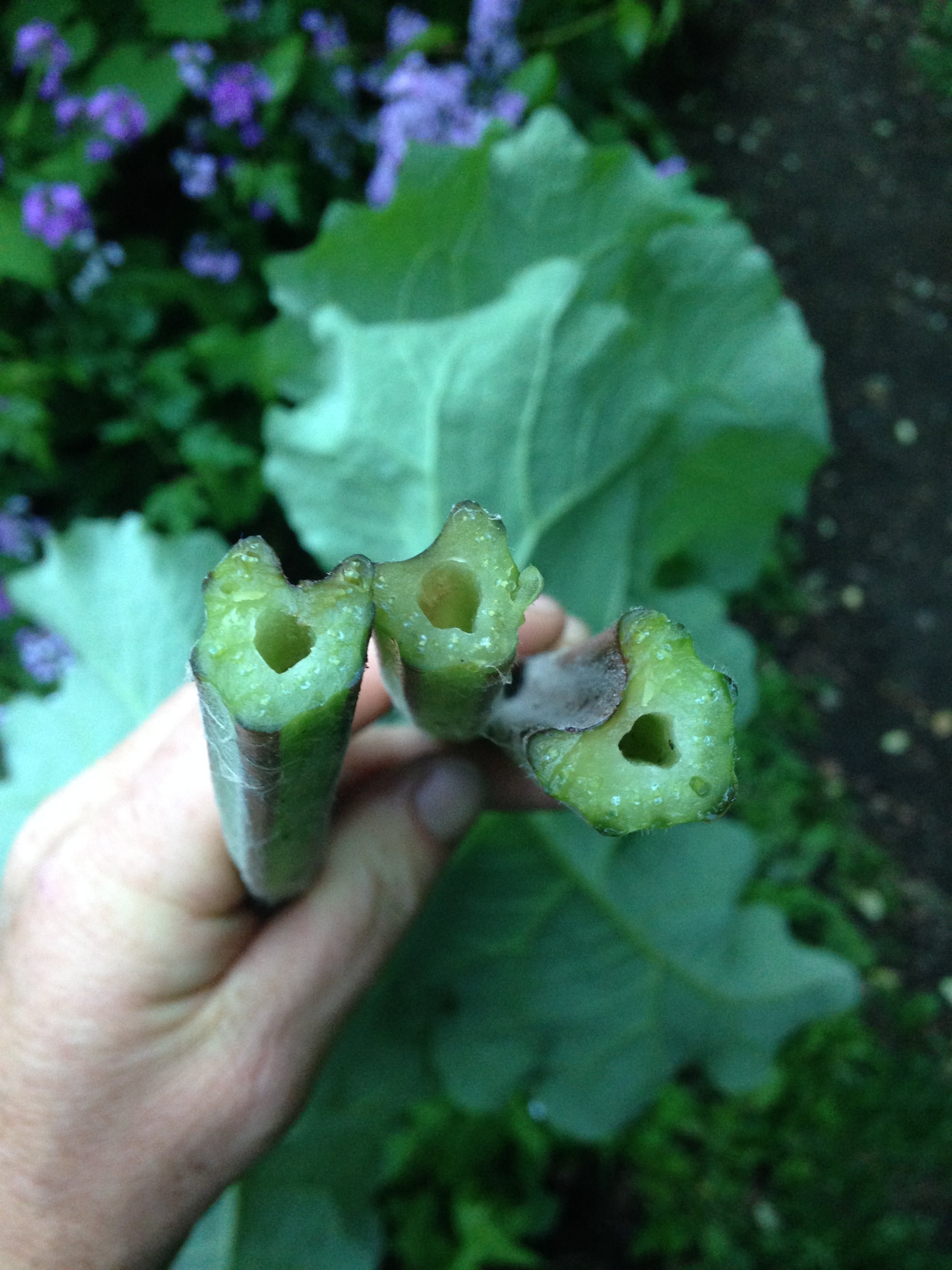
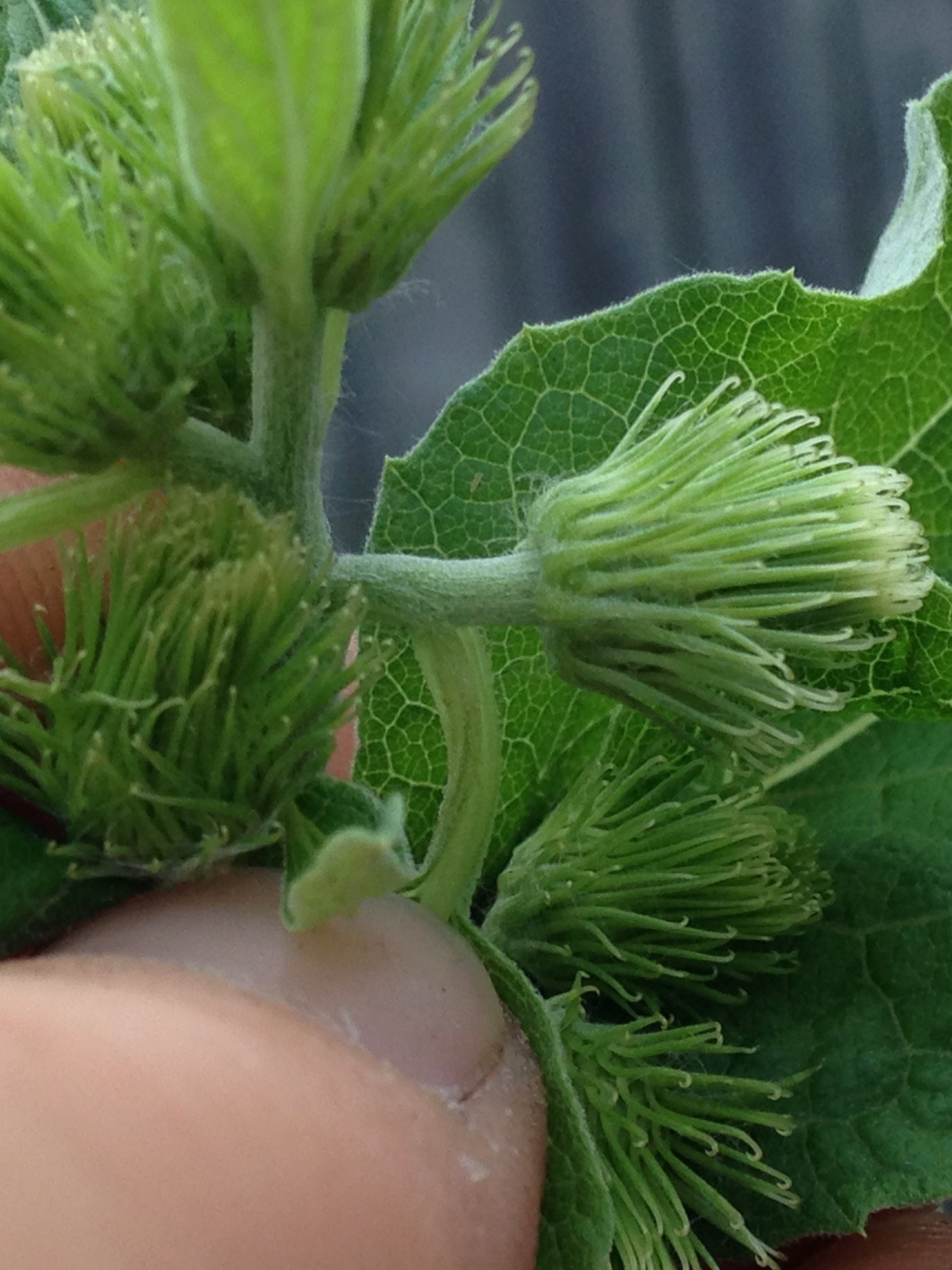
So two descriptions, one says heart shaped leaves, the other says egg shaped leaves. In “A City Herbal” by Maida Silverman, she says that the heart-shaped leaves are the lower leaves, while the egg-shaped leaves are the later growth/leaves higher on the flower stalk. I have included a photo to the side, and the lower leaves look more heart-shaped to me. That is called “cordiform” or “cordate” in botanical language.
Known broadly for being extremely recalcitrant and difficult to pull out from the ground, Burdock roots can grow up to 90 cm (~ 3 ft). They help break up and loosen compacted and heavy soils.
Similar species:
So it is a good time to get into the fact that there are two Burdocks in my range, both non-native, both look superficially similar, and neither have I identified to species until writing this journal up.
The two different species are Lesser Burdock (Arctium minus), and Greater Burdock (Arctium lappa), both interchangeably called Common Burdock, or just Burdock.
Some differences between the two species include :
A. lappa can grow to 2.75 m (9 ft), while A. minus only grows to about 1.5 - 1.8 m (5-6 ft).
A. lappa flower heads are 2.5 - 3.8 cm (1 - 1½ in) wide, with long stalks, with bracts as long as the flowers. A. minus are 1.27 - 2.5 cm (½ - 1 in) wide, either stalkless or with short stalks.
A. lappa has solid leaf stalks which are deeply grooved, and A. minus has hollow leaf stalks with a shallower groove (I think the one in all of the photos is A. minus, as the stalks were all hollow).
Another large leafed plant with a thick stalk is Rhubarb (Rheum × hybridum), the common garden plant. This late Spring favorite could be confused with Burdock, but the leaves are not coarse to the touch like the Burdock is, but rather smooth. A good thing to note is that Rhubarb contains high levels of oxalic acid and anthrone glycosides, making them inedible. If you have ever done the “Burdock challenge”, you would also recognize that Burdock leaves are also inedible.
Preferred or required habitats: (esp. regarding shade and water):
They are often found along roadways, heavily used paths, vacant lots, waste places. I tend to notice them at the edges of compact/loose soil zones, but drainage is the key (hence the semi loose as necessary). They seem to have a preference for sun, but can deal with partial shade as well.
Burdock, with their long taproot are extremely drought tolerant.
I wonder with such large leaves, does transpiration make the Burdock lose a lot of water?
Floral associates :
Smooth Brome Grass (Bromus inermis), Couch Grass (Agropyron repens), Daisy Fleabane (Erigeron strigosus), Field Thistle (Cirsium arvense) , Sulfur Cinquefoil (Potentilla recta), Wild Carrot (Daucus carota), Dandelion (Taraxacum officinale), Yarrow (Achillea millefolium), Common Barberry (Barbarea vulgaris) and many more.
Propagation and seasonality: (How does it grow? When does it sprout? Flower? Fruit? Annual, biennial or perennial?):
Large brown-grey seeds look like oversized Dandelion (Taraxacum officinale) seeds, without the pappus. They fall out of the hooked burs which remain on the plant until moved (usually by small children throwing them at each other) and other mammals getting them caught in their fur. The animals gnaw off the burs, the seeds fall to the ground, and the germination is quick. The leaves appear early in the Spring, grow for a year, overwinter, and then begin bolting the following year around early-mid June, growing a tall stalk and flowers with many leaves throughout.
Interactions with animals, birds, other plants: (as a food source, home, etc)
I have read that Woodchucks (Marmota monax) eat the Burdock roots, and the Ring-necked Pheasants (Phasianus colchicus), Killdeers (Charadrius vociferus), European Starlings (Sturnus vulgaris), and American Goldfinches (Spinus tristis) all consume the seeds.
Larger mammals, like Foxes (Vulpes vulpes), Deer (Odocoileus virginianus) and domestic mammals probably account for most of the dispersal of the seeds besides the children mentioned above.
There are 13 known insects which interact with Burdock, though only one has been encountered in Ontario, the Burdock Seedhead Moth (Metzneria lappella), or sometimes known as “Burdock Neb” or just “Burdock Moth” which overwinters as a larva within the burs of the Burdock and pupates in Spring within the seedhead. There is only one generation per year, and the larva seem to survive by consuming the seeds of both A. lappa and A. minus. M. lappella has been considered a useful component in trying to reduce Burdock populations in North America. The Burdock Seedhead Moth is parasitized by the braconid wasp Agathis malvacearum which lays eggs on larvae in burdock seed heads.
Edibility or medicinal qualities :
While notoriously difficult to dig up, Burdock root is commonly used as a vegetable in Japan, where it is known as Gobo. To avoid the challenge of digging up the whole root, Japanese farmers would sometimes build boxes above the soil and fill it with more soil, so the root would grow above the natural soil line. All you have to do is dismantle the box, excess soil spills out, and the roots remain, likely fairly intact.
Burdock is sliced, chopped, or grated and used in salads or in stir-fries. I have had a root bake of Burdock, Potato (Solanum tuberosum), Carrot (Daucus carota subsp. sativus), and Garlic (Allium sativum) and it was ok, but the best time I ate Burdock was when herbalist Tamara Segal (listen to an interview we did in 2018) once shared a pickled Burdock root in a workshop I attended, and it was earthy-nutty and kind of sweet tasting. On Tamara’s website, she has written
“When harvested in the fall, burdock root is rich in the starch, inulin. Inulin is a key source of food for our gut flora, or our "good bacteria". While pro-biotic foods and supplements give us more gut flora, we can encourage the reproduction of our already-existing gut flora with nutrients that feed it, like inulin. Food for our gut flora is known as pre-biotics. Burdock root is thus an excellent pre-biotic, and in turn it provides much support for our immune health. Winter soups with burdock root added to them are a good way to support immunity using a food that is also an herbal medicine.”
As for medicinal qualities, Burdock root has been used for skin disorders such as eczema and psoriasis. As mentioned above when I tried Tamara’s pickled Burdock root, there was a bit of a pale slime at the bottom of the jar of pickles. I know that doesn’t sound appealing, but it was there and Tamara explained that the slime was concentrated inulin that had leached out of the root during the pickling process. That inulin (a fructan polysaccharide often found in a few of the roots of the Asteraceae family) could later be used (once the pickles were eaten) to help with those skin conditions as the inulin is a “humectant”, which means that it pulls moisture up through the skin to hydrate the upper layers. Also, the Burdock room is has anti-septic properties, which can kill the bacteria which contribute to acne.
Craft uses :
I have not come across any particular craft uses in my research but I have used the leaves in the past for shade (as a floppy hat) when walking on hot days. I don’t know if it works particularly well, or better than other leaves, but I have used it.
Other notes :
A quote from Shakespeare :
“They are burs, I can tell you, they’ll stick where they are thrown.” - William Shakespeare, Troilus and Cressida, Act 3, Scene 2
In the monograph "The Thistles of Canada" by Moore, R. J. and Frankton, C. (1974) they note that in 1672, botanist John Josselyn described the “lesser clot-bur” (A. minus) being native to North America and included it on a list of “such plants which are common with us in England.” He also went on to describe the “great clot-bur” (A. lappa) to be introduced and placed it on a list of “such plants as have sprung up since the English have planted and kept cattle in New England.” Moore and Frankton then suggest that these references could imply that A. minus was (and is currently) a more common species than A. lappa.
To learn more :
The Friends of the Wild Flower Garden entry on Burdock
OMAFRA Specialty Vegetable page on Gobo (Arctium lappa)
Biology of Canadian Weeds entry on Arctium lappa and Arctium minus
BC Government fact sheet on Burdock Seedhead Moth (Metzneria lappella)
